Tales from Ternate, the Clove-Scented Isle
Some time ago, I promised I’d write a post on one of my favorite places in all of Indonesia, an island that has remained well off the tourist trail in the five years since Bama and I set foot on its shores. The following entry – which may be the longest I’ve ever written at over 5,800 words – was compiled from my notes. This is the story of how we almost didn’t make it to Ternate, and of the fascinating things we saw and heard when we finally got there.
Part I: The Landing
Flying in from the east, the volcanic islands emerge from the midday haze like a string of improbable outposts. First, we see the broken crater that crowns sparsely populated Makian off in the distance, then the almost perfect cone of Mount Kie Matubu on Tidore. Closer still looms the bald summit of Gamalama, a restive 1,715-meter (5,627-foot) volcano that dominates the isle of Ternate and, very occasionally, threatens its 200,000 inhabitants.
It’s August 2015 and Bama and I are in eastern Indonesia, entering the seventh week of our six-month odyssey along the Spice Route. Seated aboard an ATR 72-500 propeller plane from Manado, we soon realize the approach to Ternate’s Sultan Babullah Airport is a hair-raising one in high winds. Our aircraft sways and wobbles as it sinks over a mosaic of houses among a canvas of coconut trees, dotted with the tiered pyramidal roofs of neighborhood mosques. I stare out the window at the remnants of a lava flow: giant clumps of black rock softened by the greenery sprouting through the cracks. It looks as though the earth itself is an uncontrollable child in a sand pit, throwing new material out in fits and tantrums.
Suddenly, I see the runway and terminal building far beneath us. The pilot’s voice crackles over the PA system, explaining that we’ll circle around and try again in another 10 minutes. I turn to Bama, optimistically telling him, “At least we get a nice flyby.” Down below, the verdant landscapes of North Maluku seem to shimmer in the bright equatorial sun. We marvel at Gamalama in all its wild glory (the volcano had erupted only the previous month) and the city of Ternate sprawling at its feet, followed by Tidore and the smaller isle of Maitara. Heading southeast, our ATR 72 turns over K-shaped Halmahera – Indonesia’s seventh-largest island – where the hilly terrain is clad in seemingly impenetrable forest. We see a narrow neck of land separating the western shore of Halmahera from Teluk Kao, one of three great bays that define its eastern coast. Then comes a postcard-perfect lagoon of little islets and coral reefs, their dark outlines visible beneath the waves, and the new provincial capital of North Maluku, Sofifi, whose grand avenues seemingly lead to nowhere.
When the plane banks sharply for a second landing attempt, I break out in a cold sweat. I’m overcome by a sense of unease, and feel a combination of fear, anxiety, and panic bubbling to the surface; my clammy hands tighten their grip on the armrests. Never in my life have I felt this afraid of flying. A similar ATR plane carrying 54 passengers had crashed in the remote mountains of Papua province just days before (with the loss of all onboard), and international news networks were speculating about the questionable safety record of Indonesia’s airlines.
By now, the wind is pressing down onto the fuselage and tossing the propeller plane around like a toy. We brace ourselves for a rough landing. It culminates in two hard bumps on the runway, so close together they could be perceived as one. But at the very last moment – before we can celebrate our long-awaited arrival – the plane ascends back into the sky. All is silent in the cabin, save the roar of the engine and the whirring propellers on either side. A few minutes pass before the captain makes the announcement that our plane cannot handle the force of the wind. “We are going back to Manado.” Those words are spoken firmly but with a tinge of resignation. Bama and I have barely touched down on the Spice Islands, only to be beaten back by the forces of nature.
Our disappointment is even more acute after a marathon 17-hour journey. We had left West Sumatra the previous afternoon, before a sleepless overnight layover at Jakarta’s main airport to catch our Manado-bound flight at five in the morning. I wrongly assumed that the final hour-long stretch to Ternate would be the easiest leg of all. When we arrive back in Manado, Bama and I are relieved to be on solid ground. So too are the fellow passengers. We’re ushered back to a waiting area inside the terminal, where a middle-aged man stands a few paces away from us, talking breathlessly into his phone. “He is traumatized,” Bama tells me. “He says he wants to take the boat.”
Several hours later, airline representatives bring us news that the crosswinds at Ternate are still too strong for a safe landing later in the afternoon. We would have to bed down in a drab Manado transit hotel and wait until 7 ‘o clock the next morning for another flight.
Part II: The Quest
As terrifying as a turbulent aborted landing may be, 16th- and 17th-century European explorers had a much harder time even getting to Ternate. We only have to read The First Voyage around the World, a firsthand account of Magellan’s pioneering circumnavigation by the Venetian scholar Antonio Pigafetta, to understand the kinds of tribulations they faced while seeking out a westward route from Spain to the fabled Spice Islands (the Moluccas) – thus avoiding the maritime corridors controlled by Portugal. Crossing the vast expanse of the Pacific Ocean pushed the mariners to the brink of starvation: “We were three months and twenty days without taking on any food or water. We ate biscuit, which was no longer biscuit, but fistfuls of powder swarming with worms, the rats having eaten the better part. It stank strongly of their urine… and we drank yellow water that had been putrid for many days… and often we ate sawdust from boards. Rats were sold for half a ducat apiece, and even so we could not always get them.” Twenty-one men died from scurvy on the long passage; Magellan, Pigafetta, and other officers were inadvertently saved partially because their rations included preserved quince, whose Vitamin C helped protect them from the disease.
Upon making landfall in the Mariana Islands, Magellan’s attempt to procure fresh food proved futile “because the inhabitants… entered the ships and stole whatever they could lay their hands on.” It was for this reason the explorer called the Marianas “las Islas de los Ladrones” – the Islands of Thieves. Fortunately, the adventurers received a much warmer reception in what is now the Philippines, where indigenous tribesmen offered supplies of fish and rice, while introducing them to the novel, all-purpose fruit that is the coconut. But Magellan became entangled in conflicts between local rulers, eventually resulting in his own death, along with those of more than 30 other members of the expedition. With the captain-general lost, what followed was six more months of circuitous wandering through Southeast Asia.
Finally, on November 6, 1521, the weary sailors sighted “four lofty islands” (including Ternate) identified as the Moluccas by a pilot they had captured from the southern Philippines. “We thanked God and as an expression of our joy discharged all our artillery,” Pigafetta wrote. “It was no wonder that we were so glad, for we had passed twenty-seven months less two days in our search for Molucca.”
The Spanish weren’t the only ones trying to break the Portuguese monopoly on the spice trade. Eighty years after the carrack Victoria limped back to Spain with Basque explorer Juan Sebastián Elcano and Pigafetta aboard, English captain Sir Henry Middleton embarked on the second voyage financed by the East India Company (its first expedition had returned less than a year before with vast quantities of black pepper and other spices). His quartet of ships sailed down the Thames on March 25, 1604, rounding the Cape of Good Hope in the middle of August to cross the Indian Ocean. It wasn’t until December 22 that the four English vessels dropped anchor outside the bustling port of Banten (known to Europeans as Bantam), a walled city of about 100,000 – double the size of contemporary Amsterdam – on the northwest coast of Java. Middleton and his men were so weakened with scurvy and other ailments that they could not immediately come ashore. In these “unhealthy” tropical climes, dozens of mariners soon became afflicted with dysentery, which is described in Middleton’s journals as the “bloody flux”. No less than 33 of the 37 men who died on the subsequent two-month journey from Banten to Ternate expired because of it.
An annotation in the 1855 edition of The Voyage of Sir Henry Middleton to Bantam and the Maluco Islands, 1604-6 blames the fatal illness on contaminated drinking water taken aboard at Banten. Another footnote about the flux points to the natural antimicrobial properties of ingredients (such as chilies, cinnamon, cloves, nutmeg, star anise, and black pepper) in the variations of spice paste that still remain a building block of Indonesian cuisine: “It is the prevailing complaint in Java, for which reason the natives, as an antidote, eat much bumbu or curry-stuff.”
One of those spices – the humble clove – was the reason Bama and I had been so transfixed on the idea of going to North Maluku in the first place. Now a largely forgotten part of Indonesia, this region had once been dominated by a string of small but powerful sultanates that derived their wealth and prestige from the dried flower buds of the Syzygium aromaticum tree, which grew wild only on a few islands in these parts. Up until the late 18th century, cloves were found nowhere else in Southeast Asia, or indeed the wider world.
Part III: The Collector
Clear blue skies greet us the morning we are due to board the replacement flight from Manado. Much to our relief, the hourlong journey to Ternate proves uneventful; the high winds that swept down Gamalama’s slopes the previous day are conspicuously absent.
Sultan Babullah Airport lies less than one degree north of the Equator. Stepping out onto the tarmac in the dazzling late-morning sun, whose rays amplify and saturate the colors of all that they touch, I find it hard to believe that it’s not yet 10 a.m. The apparent scale of Ternate’s steel-and-concrete airport terminal is also a surprise. Cleverly built into the hillside, it boasts glass walls and two jet bridges through which passengers can board Boeing 737s flown in straight from Jakarta. “This terminal is bigger than the one in Semarang,” Bama wryly says. At the time, the equivalent structure in his hometown – a major city of 1.8 million people – was essentially a glorified single-story house.
We hail a taxi for the 40-minute drive to an intimate guesthouse called Villa Ma’Rasai, hidden up a steep, shaded road in a quiet corner of the island not far from Ternate’s sole university. A slender, silver-haired man, perhaps in his fifties, comes down the steps to meet us as soon as we pull up to the front door. Casually dressed in a T-shirt, floral-patterned shorts, and flip-flops, he strikes us as a sort of friendly uncle, not least because of his laughing eyes and freckled face, the latter framed with a moustache and a bit of stubble. He introduces himself as Hasrun – the owner and proprietor of the property. Because of the clear age difference, Bama and I address him with the honorific “Bapak” or “Pak”, the title for an older man or someone in a higher position of authority. Both of us are curious about how the guesthouse got its name. “‘Marasai’ means ‘good’ or ‘beautiful’ in the language of Tidore,” Pak Hasrun explains. “And my family name is Rasai.”
“Bapak is from Tidore?” Bama asks.
“No, I’m from Galela. But the language is the same.”
Galela is a small town on the much larger island of Halmahera; though Pak Hasrun was born there, he actually spent most of his formative years in Ternate, attending elementary school and junior high school in what was then – and still is – the largest settlement in all of Maluku’s northern islands. Bama quizzes him further. Was it different back then?
“Oh, very different!” he exclaims. “The city used to be much smaller. There were goats everywhere and the road here was so narrow, it was like being in a very remote place. Even the airport back then could only accommodate smaller planes. To fly to Jakarta, you would have to go through Manado or Ambon.”
We learn that Pak Hasrun used to run a small travel company in Yogyakarta, organizing trips for small groups of up to 10 people before the internet age, when it was far more difficult to book hotels and domestic flights from overseas. Even then, he had already laid the foundations of his future family home and what would later become Villa Ma’Rasai. “It took nearly 15 years to build,” he says.
Pak Hasrun’s two decades spent traversing Indonesia as a private tour guide is borne out in the communal spaces downstairs; along one wall of the dining room there are framed old photographs of Ternate, and above them, two ikat fabrics from Sumba. Another two examples of Sumbanese ikat are draped in the main reception room. A decorative cloth from South Sulawesi’s Tana Toraja region hangs above a stash of magazines by the base of the stairway, while miniature boats carved out of ebony by craftsmen in Maluku’s Tanimbar Islands take pride of place on table tops. “They can carve them while talking to other people without losing their concentration,” Pak Hasrun recalls.
And there are display cabinets whose contents include ancient Chinese ceramics salvaged from a ninth-century shipwreck found off the Indonesian island of Belitung. Much of their original colors – and their glaze – have been erased by centuries spent in salt water. Pak Hasrun tells us he bought them from local residents, adding, “There was pottery from the same ship that was sold at an auction house in Hong Kong.” The true value of these sunken treasures was not lost on the bidders: a Singaporean state-owned enterprise paid US$32 million for the haul, which eventually ended up in the city-state’s Asian Civilisations Museum.
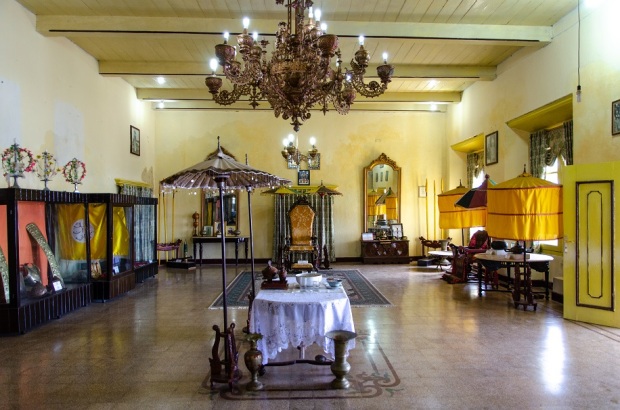
An altar to Gamalama inside the throne room; the mystic crown is kept behind the curtains at the center
Part IV: The Crown
At precisely eight o’clock on our first night in Ternate, we’re reminded of the island’s place on the volatile Ring of Fire. Bama is standing on the other side of the room when the wooden floorboards begin to vibrate. A few weeks before, I had wanted to try out the earthquake simulation box inside the Aceh Tsunami Museum, but the contraption, like so many things in the poorly maintained building, did not work. Now, I was getting a taste of the real thing. We do not hear the ground rumbling, though the large wardrobe in the corner clatters loudly and its doors swing open; I look up to see the curtain rod moving to and fro. The shaking subsides after about 10 to 12 seconds. “In Indonesia, we’re used to earthquakes,” Bama says. “I would have started getting worried if it was longer.” We check our mobile phones and find out the tremor registered 5.7 on the Richter Scale, with an epicenter 95 kilometers (59 miles) southwest of Ternate in the Molucca Sea.
The prevalence of volcanoes and earthquakes in Indonesia has given rise to all kinds of unique indigenous traditions, with the legitimacy of local rulers linked to the state of affairs in the natural world. Not for nothing does the Sultan of Yogyakarta maintain a close relationship with a spiritual “gatekeeper” of Mount Merapi, whose primary task is to appease the spirits of Indonesia’s most active volcano. Ternate, of course, has a special relationship with Gamalama. The island is the fire-breathing mountain; without it, Ternate simply would not exist.
Our very first glimpse of the Sultan’s Palace – the kedaton – came during the journey from the airport to Villa Ma’Rasai. It immediately made an impression: imagine a high-hatted pastel-yellow mansion overlooking a stepped garden, the city, and the sea from its hillside perch, with slender pillars marking out the limits of an upstairs veranda. The Sultanate of Ternate began as a 13th-century pre-Islamic kingdom, but its latest palace was only built in 1813 according to the design of a Chinese architect, with sturdy, meter-thick walls to withstand powerful earthquakes. When we eventually pay the kedaton a visit, an elderly caretaker and guide unlocks the door of the palace-museum. He points out an altar with small bowls of offerings and two ceremonial umbrellas, not dissimilar from the ones seen in Bali, positioned near the center of the spacious, high-ceilinged throne room. Three nights a week, our guide explains, the sultan performs a ritual to pay respects to Gamalama. It’s just one of many royal traditions that have persisted despite centuries of European colonization.
In his landmark book the Suma Oriental, a remarkably detailed “Account of the East” that is believed to be the very first European description of what is now Malaysia and Indonesia, the Portuguese apothecary and explorer Tomé Pires (c. 1465–1540) writes:
“The people of Ternate are knights among those of the Moluccas. They are men who drink wines of their kind. Ternate has good water. It is a healthy country with good air. The king of Ternate has four hundred women within his doors, all daughters of men of standing; he has many daughters by them. When the king goes to war he rallies forth with a crown of gold, and his sons wear them also as a mark of dignity.”
At the time Pires compiled his treatise on Asian trade between 1512 and 1515, Ternate was a vassal state of Portugal. The great Malay port of Malacca had only just fallen to the Iberian conquerors, and Sultan Bayan Sirrullah (a.k.a. Abu Lais) saw the Portuguese as powerful foreign allies who could perhaps keep the rival kingdom of Tidore in check. Pires himself is known to have visited the Spice Islands; he records how Ternate was not just an important producer of cloves but also a thriving entrepôt. Iron axes, knives, and swords from the islands of Banggai (off east-central Sulawesi) passed through the harbor, as did gold and parrots from elsewhere in the Moluccas.
Pires doesn’t elaborate on the crown Sultan Bayan Sirrullah wore into battle, though it may well be the same one known to 21st-century Ternateans as the Stampa. Today, the sacred relic is kept in a small chamber inside the palace, located directly behind the sultan’s throne and hidden from view by thick curtains. Bedecked with all kinds of precious stones – diamonds, rubies, and emeralds – and made of pure gold, the crown rivals those made for European monarchs in its jaw-dropping finery. No one knows the Stampa’s true origins or anything about its maker, and our guide reveals a surprising trait: that the mystical artifact has the inexplicable ability to grow its own mop of hair, which is cut in a private ceremony held every year at Idul Adha, the Islamic “feast of the sacrifice”.
Such is the supernatural power of this crown that Ternateans believe it can calm even the island’s restive volcano. Each year, the sultan sails with the Stampa aboard his kora-kora, a large double-outrigger canoe, circumnavigating the island (joined by his followers in separate boats) in a ritual procession to ward off disaster. Not so long ago, Gamalama erupted while the late sultan was in faraway Jakarta. The people of Ternate begged him to return to perform the ceremony, and once it was completed, the volcano fell silent. Scientists will tell you it was mere coincidence, but the Ternateans think otherwise.
Before we leave the throne room to wander the palace grounds on our own, the guide explains how royal succession works in Ternate. The title of sultan does not automatically pass onto the eldest son of the previous monarch, and it is not the general populace, nor a council of close advisors, who chooses the next ceremonial ruler of the island. It is quite literally the royal crown itself. Ternate’s late sultan, who passed away a few months before our arrival, had four wives who bore him nine heirs. According to tradition, each of those sons will go into the hidden chamber to try on the mystical crown. If it does not fit someone’s head, or if the wearer feels it is too heavy, then he is simply not fated to be the successor. The next sultan is the one on whom the crown fits perfectly. When I relate this story to a fellow traveler in the Banda Islands several weeks later, she reacts in wide-eyed astonishment. “It’s just like Cinderella!”
Part V: The Rebel
When the Portuguese washed up on the shores of Ternate in the early 16th century, Sultan Bayan Sirrullah gave them permission to establish a fortress on the island’s southwest coast. Modern-day Ternate still possesses a string of colonial-era strongholds that attest to the fierce rivalry between the Spanish, Dutch, and Portuguese as they tried to wrest control of the Moluccas from each other.
Equipped with a sketch map drawn by Pak Hasrun, Bama and I set out one morning on a round-the-island motorcycle tour to inspect several forts whose names read like a roll call of exotic desserts: Kastela, Tolukko, Oranje, and Kalamata. Our next stop is the oldest one of them all – Kastela. It was originally called São João Bautista de Ternate, for Portuguese settlers laid the first stone on the feast day of John the Baptist (June 24) in 1522. Here, we park the motorbike by the island’s ring road and slip into the narrow gap between the crumbling fortifications and a recently renovated mosque. Clambering onto the remnants of a Portuguese-built stone wall, Bama and I take in a peaceful tableau of coconut palms and low-slung houses amid the greenery. The sound of waves crashing into the nearby shoreline is clearly audible. At the center of it all is a roofless bastion, likely left over from the time the fort was expanded during Spanish rule in the 17th century. A far more recent addition to the grounds is a bulky concrete monument crowned by a giant clove bud; the four faces of the pedestal depict the struggle between the people of Ternate and their first European colonizers.
Kastela was where the treacherous Portuguese governor Diogo Lopes de Mesquita had Sultan Hairun (Babullah’s father) assassinated in 1570. Rather than cowing the Ternateans into submission, this act of betrayal had the opposite effect: decades of simmering anti-Portuguese sentiment boiled over and the people rose up in rebellion. Local forces led by Sultan Babullah besieged the Iberians within the walls of Kastela for five years, after which they were banished from the island. Babullah’s reign would usher in the golden age of the Ternate Sultanate – 1580 saw the launch of a successful naval expedition to subjugate petty kingdoms in both northern and southern Sulawesi, and Ternate’s influence was felt as far away as the Solor Archipelago, some 1,120 kilometers (700 miles) to the southwest.
About a 10-minute drive up the slopes of Gamalama from Kastela, through a village with impossibly steep roads, lies the beginning of a cement pathway to Sultan Babullah’s tomb. En route, we spot young durians and nutmeg ripening on the branch, their golden fruit splitting open to reveal the luminous red skins of mace cloaking the chocolate-brown seeds. The air in these parts is heavily perfumed, filled with the same heady fragrance of a precious commodity that drew Javanese, Chinese, and Arab traders in centuries past. It is then that I realize we are in what Pak Hasrun referred to as hutan cengkeh – a clove forest.
Sultan Babullah’s final resting place is in a small open-air pavilion, watched over by a lone caretaker and shielded by a delicate silk screen that dances to the rhythm of the mountain breeze. Four centuries after his passing, the monarch is still remembered in Indonesia as a national hero who fought against foreign domination. Bama recalls learning his name during history lessons at primary school, and not for nothing is Ternate’s airport named after the warrior king.
Circling back to the city, we find two more noteworthy sites on the far side of the island. Heavily restored Fort Tolukko occupies a small bluff above the northern neighborhoods, and it dates from 1611, a period when Ternate was divided between the Spanish and the Dutch. Visitors are such a rarity here that the gate seems to be padlocked no matter what time we show up; only on our second try do we find out that it’s the elderly woman living next door who holds the key to the fortress. There’s nothing of interest inside, but the views from its restored ramparts toward Halmahera to the east and Tidore to the south are unbeatable. Our final stop before returning to Villa Ma’Rasai? The waterfront fort of Kalamata, which guards the strategic channel between Ternate and Tidore, and just the place for a picnic thanks to its well-tended lawns. Shaped somewhat like a bird in mid-flight, Kalamata was built in 1642 atop the remains of an earlier Portuguese structure.
Part VI: The Corporation
Easily the largest of Ternate’s surviving colonial monuments, Fort Oranje was established by the Dutch in 1607 as Fort Malayo. It served as an important outpost for the Dutch East India Company, or Vereenigde Oostindische Compagnie (VOC), which made history as the world’s first multinational corporation upon its creation in 1602. The VOC was given free rein to claim and manage overseas possessions for the Dutch crown, and today, more than two centuries after its demise, the accounts of its various exploits should serve as a cautionary tale of just why governance and welfare should not be left in the hands of profit-driven private companies.
I have already written about the VOC’s campaign of genocide and enslavement in the Banda Islands, once the world’s sole source of nutmeg and mace. Such was the Dutch hunger for total control of the spice trade that authorities enacted a new policy of extirpation in 1652, by which every single clove tree not owned by the VOC would be uprooted and burned. Anyone caught growing or possessing cloves without the company’s permission was sentenced to death, and a maximum of 1,000 tonnes were allowed to be exported each year to keep clove prices artificially high. The remainder of the harvest would have to be destroyed by burning or casting the unwanted cloves into the sea.
Somehow, the Dutch missed a single tree hidden in the dense forests midway up the slopes of Gamalama. This lucky survivor, now venerated by the Ternateans as Cengkeh Afo (literally “Old Clove”), was discovered by a cunning French missionary and horticulturalist by the name of Pierre Poivre (“Peter Pepper”), who promptly took several of its seeds and smuggled them out of the Dutch East Indies. Those precious specimens formed the basis for clove plantations in the French colonies of Mauritius and Réunion, thus bringing the Dutch monopoly to an end.
Cengkeh Afo reached the grand old age of 416 before it died in 2000; Bama and I have decided to seek out Afo 2, the 250-year-old successor to the ‘mother tree’. It is for this reason that we find ourselves scrambling up an unmarked dirt track from a road leading to a lonely TV transmitter station. Once past several villagers’ houses, the trail joins a cement pathway that crosses a wobbly bamboo bridge – I can feel the trunks sagging under our weight – into woodlands redolent of spices, where the ground is littered with ripened purple-red cloves. By now, we are about 600 meters (1,968 feet) above sea level. Then we stumble across our prize in a clearing ringed by a protective cement wall – the world’s oldest clove tree.
Most of the main branches are dead, but there is one still festooned with healthy leaves and flower buds. These maturing cloves, whose colors span the spectrum between yellow and pale red, are already beginning to develop their distinct shapes, which gave rise to the spice’s names in Portuguese (cravo-da-índia – nail from India) and Dutch (kruidnagel – nail herb). Recalling our time at Afo 2 is especially poignant now, because the noble old tree no longer exists: it collapsed and broke into pieces last July after a bout of high winds and heavy rain. The deceased giant is survived by Afo 3, half a century younger and planted in the same vicinity.
Part VII: The Scientist
With the Dutch stranglehold on clove production finally broken, the original Spice Islands slipped into obscurity. Ternate was a quiet colonial backwater by the time British naturalist Alfred Russel Wallace arrived on the scene in the mid-19th century. He rented a single-story house above the town for three years (1858–1861), using it as a base to pack his growing collection of natural history specimens and recuperate between expeditions to Papua and the various islands of Maluku. Though he did not set out to become one, Wallace was an excellent travel writer: his eight-year-long odyssey across modern-day Malaysia, Indonesia, and Singapore are recounted with wonderfully evocative details in his seminal book The Malay Archipelago.
We also know from the aforementioned volume that Wallace was a big fan of the polarizing durian, which less adventurous 21st-century Englishmen will doubtlessly avoid after a whiff of its pungent scent (often compared to dirty feet or unwashed socks). He wrote that the lower slopes of Gamalama were “almost entirely covered with a forest of fruit trees, and during the season hundreds of men and women, boys and girls, go up every day to bring down the ripe fruit. Durians and mangoes, two of the very finest tropical fruits, are in greater abundance in Ternate than I have ever seen them, and some of the latter are of a quality not inferior to any in the world.”
Of course, the island is known among biologists as the place where Wallace penned his long-lost “Letter from Ternate”, a groundbreaking essay on natural selection addressed to his contemporary and friend Charles Darwin. The actual contents of said letter remain a mystery, but it did prompt Darwin to publish his theory of evolution, developed in parallel, in the rather less engrossing book On the Origin of Species.
Bama and I find a bust of Wallace at the small, soon-to-open Spice Museum within the walls of Fort Oranje. At the time, the exhibition gallery is housed in the restored former governor’s residence, which has been newly tiled and spruced up with a fresh coat of pastel-yellow paint. A friendly staff member who takes us around the space pauses in front of Wallace’s likeness and addresses the great naturalist with beliau, the respectful Indonesian term for him or her. “He was the inventor of the Industrial Revolution,” he says confidently.
Without missing a beat, Bama corrects him: “Evolution.”
“Yes, the Industrial Revolution.”
Our unofficial guide might not be the most reliable when it comes to facts, but he does know a thing or two about Ternate’s local myths and legends. About halfway into our round-the-island motorcycle tour, we’d stopped to take pictures of a placid natural pool separated from the ocean by a neck of black sand. This was Tolire Kecil (literally “Small Tolire”), and in a crater hidden by a forested hillside barely 300 meters (or 980 feet) away, we later found Tolire Besar (“Big Tolire”). According to the museum official, the creation story of the two lakes goes something like this:
It is said that Tolire was the name of a village. One day there was a huge festival and everyone became very drunk. In his inebriated state, the chief slept with his own daughter and this act of immorality greatly angered the gods. They punished the people of Tolire by wiping their settlement off the face of the earth. The village head ran toward the forest, where the ground cracked open and he fell into a yawning cavity that became Tolire Besar. The daughter ran to the coast and a similar phenomenon occurred, creating Tolire Kecil.
An air of mysticism still surrounds the pools. Tolire Besar is said to harbor crocodiles; local folklore has it that treasure is buried under its milky green waters, as 16th-century Ternateans threw their jewelry and other valuables into the lake to stop them from falling into the hands of the Portuguese. A month before our visit, firefighters pumping water from Tolire Kecil to clear the road of Gamalama’s volcanic ash apparently sighted an albino crocodile with a red scarf tied around its neck.
We do not know if Wallace ever saw either of the lakes, or studied the wildlife inhabiting the forests around them. The ring road did not exist in the mid-19th-century, and I’m doubtful the naturalist would have had the appetite to make the trek after returning from jungly places where he repeatedly fell ill with malaria.
It wouldn’t be a stretch to say that foreign visitors in Ternate are still as rare as they were during Wallace’s time. During our week on the island, we come across no more than eight foreign visitors: one at the airport, an older Dutch couple at Fort Oranje and two families at the guesthouse. Before breakfast on our final morning at Villa Ma’Rasai, Bama and I meet a US-based Polish journalist and his four-year-old son. The father says he has come to the Spice Islands to do research for a future book on Magellan.
“Four more years and it will be the 500th anniversary of Magellan’s voyage,” he explains. “I am following in his footsteps.” The serious-faced reporter is inquisitive, jaded, and direct in his manner of speech – all the traits you’d expect from a foreign correspondent hardened by firsthand experiences of war and social unrest. It isn’t long before he regales us with anecdotes from his various global assignments. “Everyone should see a revolution from up close,” he tells us openly. “I was in Benghazi when Gaddafi’s tanks approached and NATO bombed them. There were celebrations every day in the main square. Libya is a mess now, but at the time it was the happiest place in the world.”
I decide to tell him about the local Ternatean specialty of ikan masak kering kayu, more specifically the homemade version at Villa Ma’Rasai, which comprised generously sized fillets of skipjack tuna coated in an earthy red sauce and spice paste. It’s even tastier than rendang. Pak Hasrun explained that the dish was developed out of necessity for local travelers embarking on the pilgrimage to Mecca. Not dissimilar to rendang, the original cooking process removed moisture from the fish (hence the long-winded name “fish cooked [to be] dry [like] wood”) so that it could last for months on the voyage from Ternate to Jeddah. I can’t help recommending this delicacy to the Polish journalist before rattling off some of the local ingredients in the sauce: “It uses all kinds of spices… cinnamon, cloves, star anise, ginger, turmeric, chili…” The foreign correspondent wrinkles his nose as he spreads a wad of strawberry jam over the top of his omelet. “Is it even edible?”
Durian-loving Wallace, I imagine, would have been far more interested. In his own words, he “spent many happy days” at his rented house, took frequent walks in the town, and appreciated the “unwonted luxuries of milk and fresh bread” as well as a stable supply of fish and eggs, meat and vegetables – all of which were harder to come by on his travels to remote parts of Maluku and Papua. My only regret from our time in Ternate is not asking for the recipe of Pak Hasrun’s ikan masak kering kayu. Perhaps one day I will. ◊




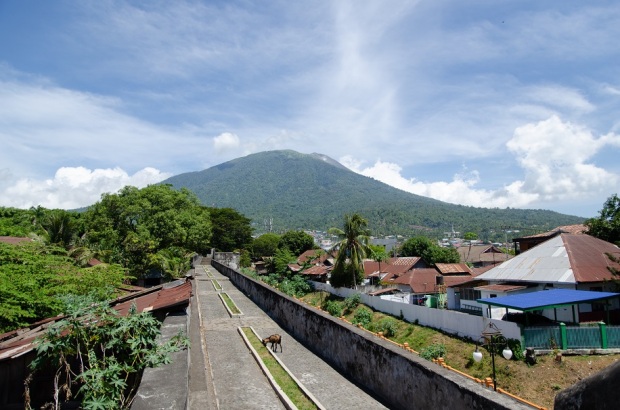
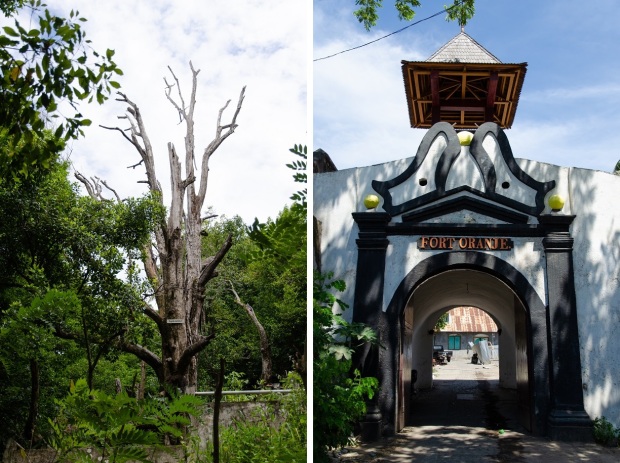
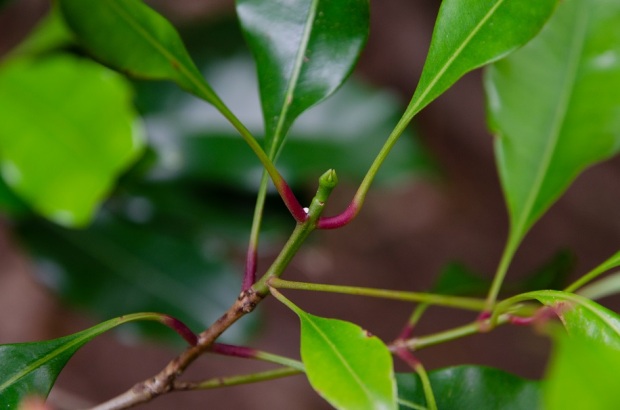

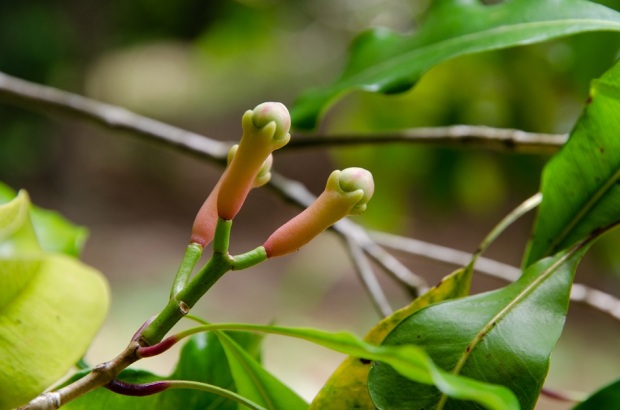

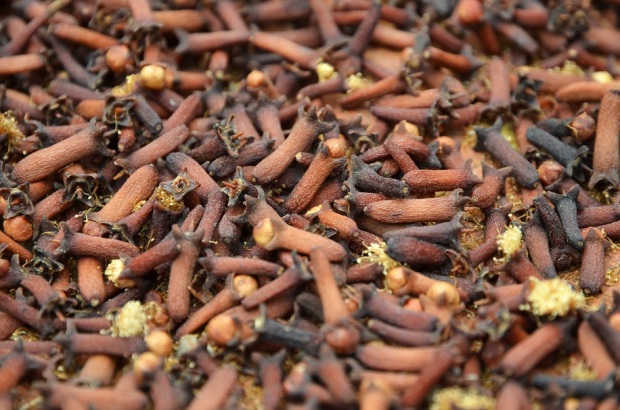
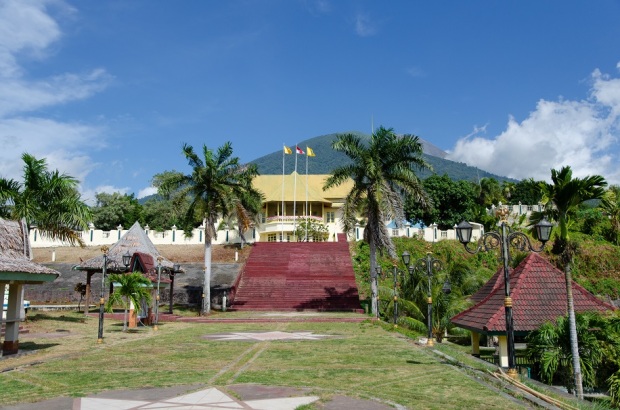


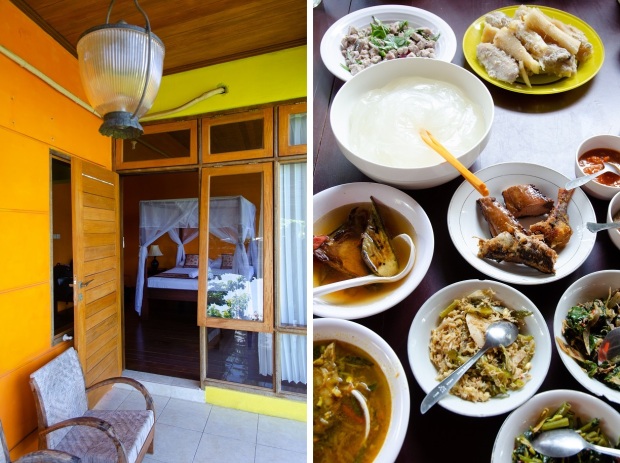


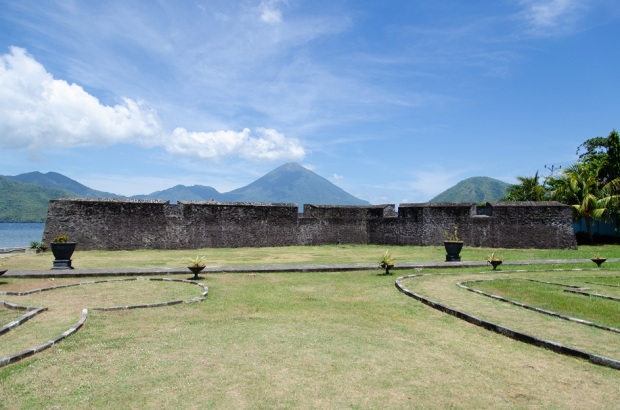
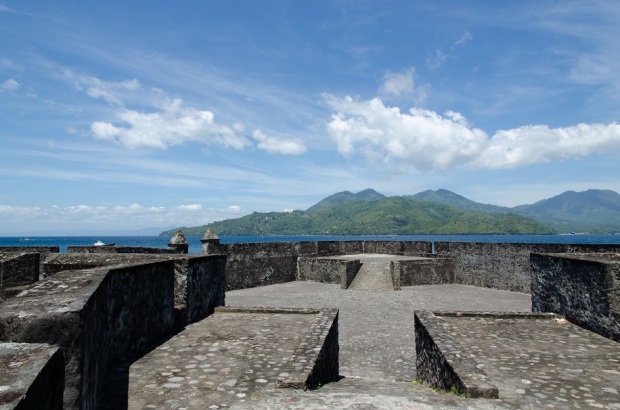
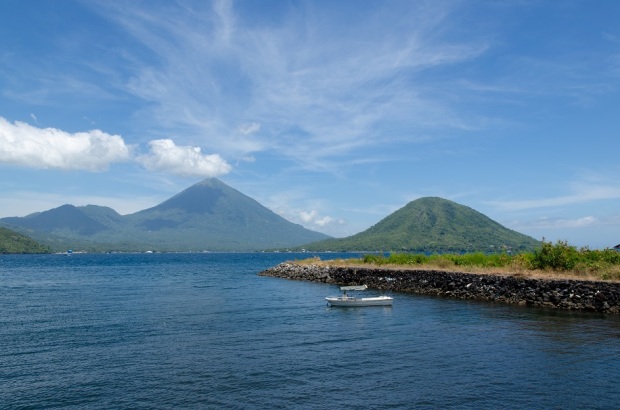


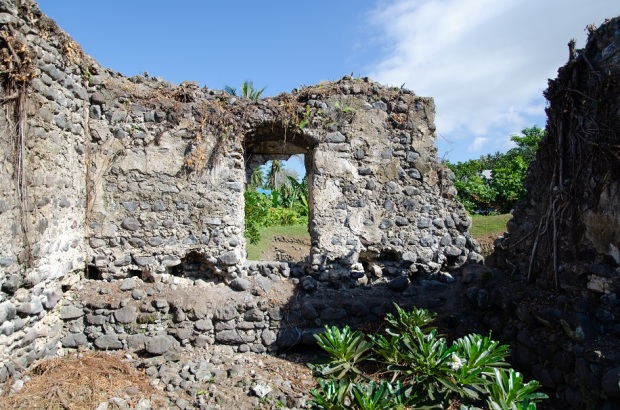
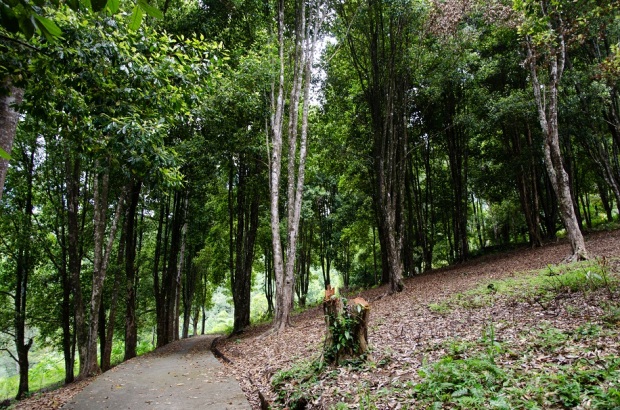



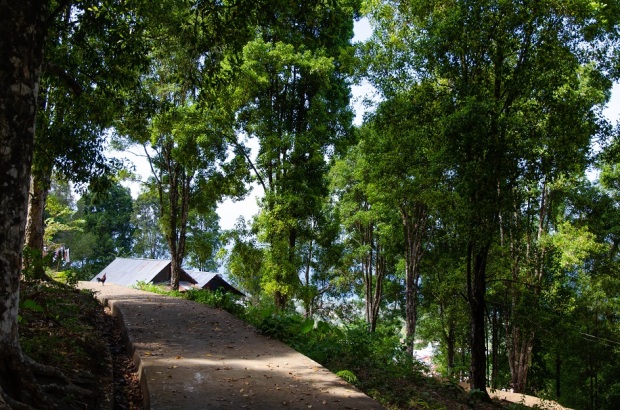
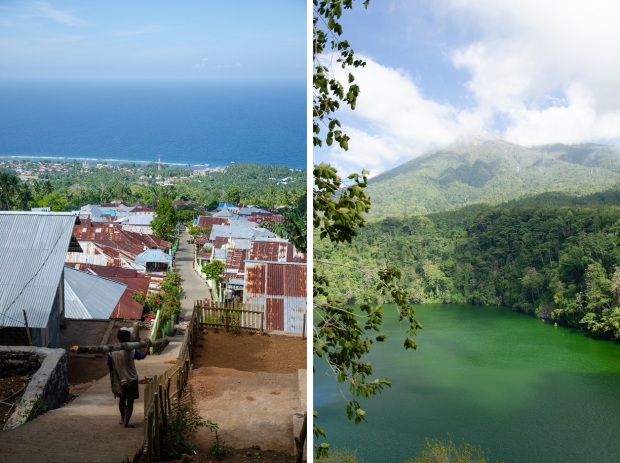
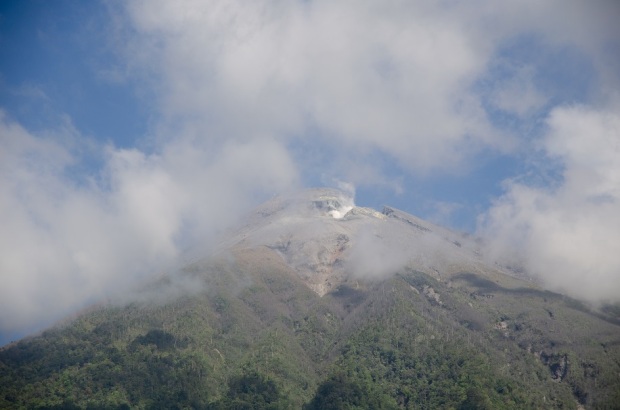

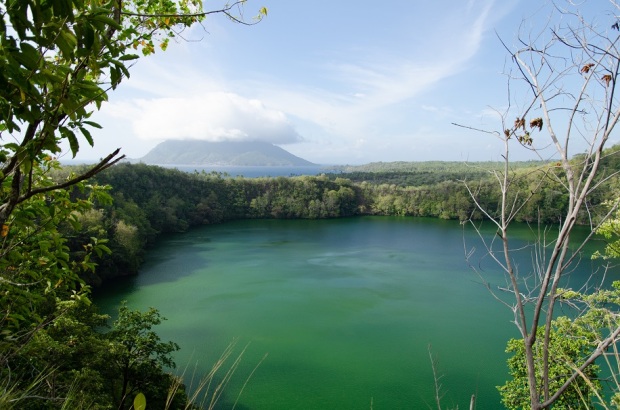

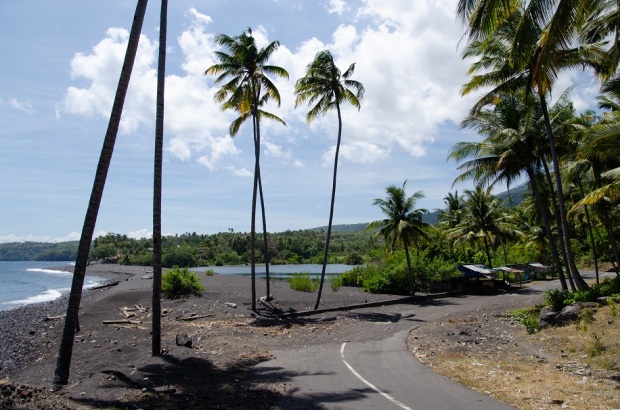
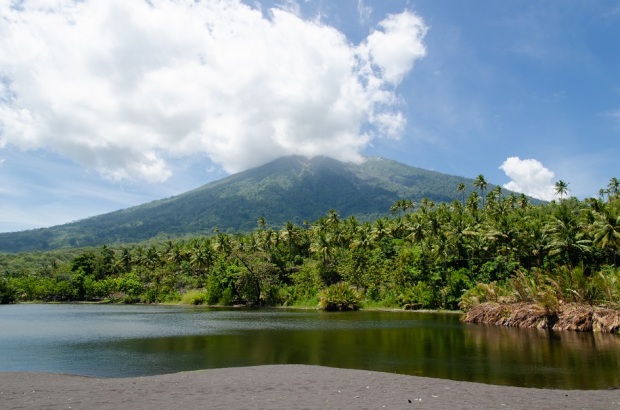

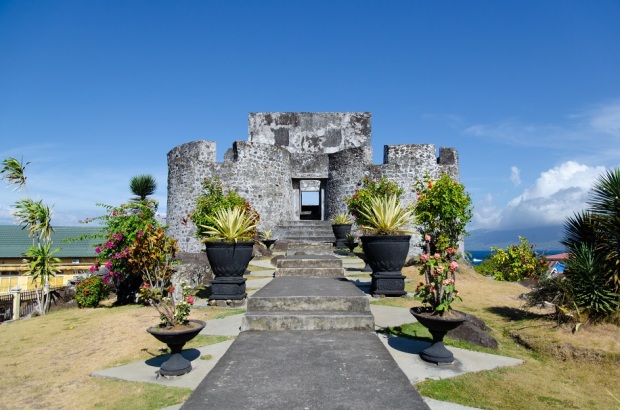
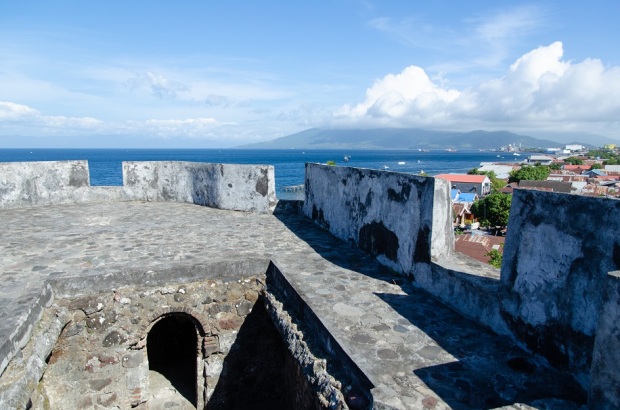
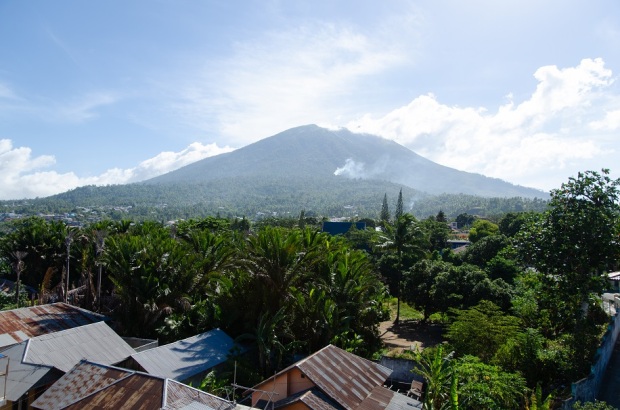
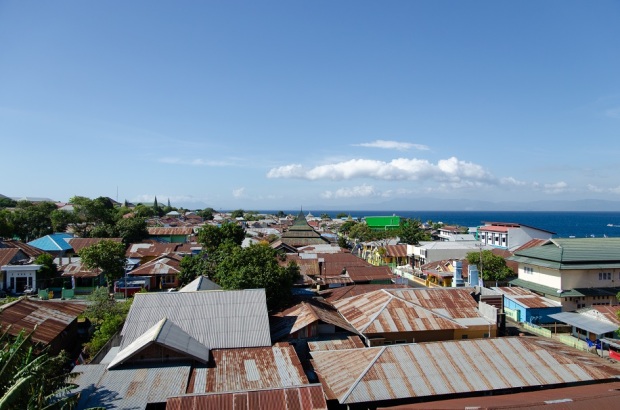





The island of the thieves! Now that’s unfair. Not when there is a different island that took away the marble friezes from the Parthenon and the Koh-i-noor of Sind.
Ha! I suppose it wouldn’t be far off the mark if the British Museum was renamed the House of Stolen Artifacts.
🙂
More than just a travel writer, you are quite the historian! This is an area I haven’t visited and the details are compelling. You found the perfect guide.
Thank you so much for the kind words! I can tell you that Ternate is well worth the extra effort of getting there… especially if you enjoy history and have an interest in spices/cooking.
Thank you James and Bama, taking me on such most beautiful virtual tour, I felt like being myself on an amazing trip. Now I know the stories about clove, nutmeg and mace, which I use most often for baking and cooking. Safe travels and much happiness to you both.
It’s a pleasure, Cornelia! I’m very happy my words and photos gave you a sense of what it was like to be in Ternate. I definitely appreciate clove a lot more now that I’ve been to the place where it came from. Bama and I have been traveling a lot less these days so we are going through material from our previous trips – I still have many many stories to tell! And thank you also for the well-wishes. May you and your loved ones stay safe, healthy, and happy throughout this time!
Thank you James and Bama for your kind response. I am looking forward to your previous trips to share. We all aren’t able to travel at these times. Stay safe, healthy and happy.
Wonderful segue from your terrifying flight to the travails of the early explorers. For me, seeing the spices in their natural form was the most fun; I’m embarrassed to say I’d never even thought about what a clove looked like on its tree! I also got a good laugh out of the evolution/Industrial Revolution mix-up! Very nice to see you back here, James!
Thanks Lex! It feels good to finally publish something after a two-month hiatus. This post has been in the works for quite some time… I picked out the photos many weeks ago and even had them resized and uploaded in a draft, but after that my motivation just evaporated. Eventually it took three full weekends and a bit more to cobble this post together. I’m glad the sheer length didn’t put you off!
Reading about the scurvy and starvation (and dysentery) those explorers faced made me incredibly thankful that we live in the 21st and not the 16th century – our brushes with airplane turbulence seem so small and laughable in comparison. My siblings say they remember a particularly scary flight in our teenage years when we took a small United Airlines plane from Denver to a small town somewhere in Colorado (I think it was called Hayden), but apparently I managed to sleep through the worst of it!
Exactly the perspective I meant – a quick and awful flight (that one survives, of course) versus months of hardship at sea or overland! I looked up Hayden and see it’s near Steamboat Springs; you must have been a family of skiers. Any small flight over high mountain passes has the potential for some scary moments for sure; glad you were young enough to be blissfully unaware!
Ah yes, Steamboat Springs it was! We went in the summertime so there was no skiing… our destination was a ranch called Vista Verde for days spent horseback riding out in the country and a bit of rock-climbing too. One of my favorite memories from that trip was riding back to the ranch in a hailstorm and then jumping into the hot tub on the front porch of our chalet for a relaxing soak!
James well done on this extensive piece that jetted me away from the worries of the day. I wasn’t so keen on the flight though I have to say. Yikes! To be honest I must say I know very little about how spices grow. They they sit in my kitchen pantry. I don’t think I would have had the courage, or the stomach for that matter, to be an early explorer.
Lovely to see you here James. I hope this finds you safe and well.
Thank you so much, Sue! The flight was harrowing at the time, but if I had to go through it again now I think I’d be a little less scared. Ternate seemed like the perfect place for a cycling trip in my opinion – it was never too crowded and the roads were in pretty good shape. Plus there was some gorgeous scenery at every turn.
I’m well as can be, though nowhere near as active as I’d like. Hope you and Dave are staying healthy and in good spirits despite all that is happening in the world!
Thanks James. Yes we remain well and are thankful to live near the Canadian Rockies. A wonderful escape from the these challenging times.
What a wonderful read. In spite of several visits to Indonesia, every article you write makes me realize how little I’ve seen or know about the country. And by the way — when you do come across that recipe, please share it. Just reading about spices and viewing the photos makes my mouth water.
Oh, I definitely will! The plan is to return to Villa Ma’Rasai (hopefully in the next few years) and arrange a cooking class. I also miss the breakfasts we had there – it was so nice to wake up to a spread of avocado salad with fresh tomatoes and shallots, perfectly fried (or scrambled) eggs, and crispy toast washed down with tropical fruit juices.
Yum!
Thanks to the high winds that forced us to spend one night outside the airport in Manado, we ended up staying longer in Ternate since we decided to cancel our stay in Tobelo, which turned out to be a good decision. Among my fondest memories of Villa Ma’Rasai are the travel book on Kalimantan (I think it was written in the 1980s or early 1990s) with stunning images of ornately-decorated Dayak traditional houses, and the skunk gecko (native to this part of the world) that one night showed up in our room. Except for the locals’ penchant for loud music, the island itself was such an idyllic, historic place. For me, visiting Ternate long after learning about this part of Indonesia (together with Tidore, Bacan and Jailolo) at school some 20 years prior to this trip was such an unforgettable experience.
Looking back on it now, the delay and unscheduled stopover in Manado was a blessing in disguise. The islands of Maluku shouldn’t be explored on a hurry, so we made the right choice to save Tobelo and the rest of Halmahera for another trip. It’s strange that I didn’t get any photos of the various artifacts and details in Villa Ma’Rasai – I suppose that’s just one more reason to go back!
Years ago I read a wonderful book about the spice trade, and remember Bama discussing and then writing about the trip exploring parts of the spice trade route ~ this brings it all back again. Wonderful, and you bring Ternate and its history to life with your writing and photos. The fact that it takes a bit more effort to get there makes it even more appealing. Wonderful write up, James, and how I hope to see and experience the Spice Islands one day, as well as experience the tales of Ternate in person. Cheers and wishing you a great holiday season.
Cheers too, Randall, for the kind words and well-wishes. This hefty chunk of text on Ternate was meant to be a chapter of a book that never quite materialized, partly because I felt that we had merely skimmed the surface on many of the places we visited on that six-month journey. Our explorations just required more depth and interesting local characters to be turned into a real page-turner. Perhaps someday I’ll make it happen. Stay safe and healthy wherever you are, and enjoy the holidays with your loved ones!
Amazing post James. Good to see you back. What a lot of history for one little island! Those cloves must have been something special. I’ve never used them but my mum, who was a wonderful cook did for sure. What people went through, and did to others, just to make money from a scarce commodity. I guess nothing much has changed sadly 😦
Your first flight sounds terrifying and thank goodness the pilot knew enough to know when to give up and turn around. But you got there in the end and it sounds like it was a pretty interesting time for you.
Alison
Thank you so much, Alison! Strangely enough, Bama and I left Ternate without buying a single bag of local cloves. Even if they smelled wonderful and are used in both Indonesian and Chinese cuisine (cloves happen to be an integral ingredient of five-spice powder). It looks like humanity hasn’t learned anything from the abuses and excesses of the VOC… when I read about how the Dutch restricted the supply of cloves to keep prices artificially high, that instantly made me think of modern-day cartels like OPEC.
James
The first thing I did when I finished reading your post was google Ternate so I could see where it’s located. Wow, I understand why it doesn’t get many visitors. Indonesia continues to amaze me with its size and treasures. How wonderful it must have been to explore such a little-visited place with so much history. I’m a big spice lover (sent my son a great selection for Christmas this year) and am fascinated by how they grow. Perhaps if I ever get my wish to dive in Raja Ampat, I can fly from Manado to Sorong with a pit stop in Ternate (though your tales of aborted flights and earthquakes give me the chills). Nice to “see” you James!
Raja Ampat sounds like the perfect spot for a post-pandemic vacation – especially once we’re all vaccinated and things have largely returned to normal! I loved Ternate for various reasons. It is wonderfully off the beaten track, and I don’t think much has changed in the past five years or so. After delving into the island’s history and tracking down Afo 2, I’ve never looked at cloves the same way again. I reckon taking a larger plane (say a Boeing 737) from Manado is the way to go – when we left Ternate we made sure it was not on a prop plane as we didn’t want to risk getting stranded because of those crosswinds. Thanks for reading this (very) long post and commenting, Caroline, and Happy New Year!
Hi James,
Your article is very deep and complete on my late father’s hometown. As the decent of Sultan Bab’ullah there is plenty of untold history that haven’t opened, yet.
This is one of reference on Ternate’s Royal Ark
https://royalark.net/Indonesia/ternate.htm
Hi Ryan, thanks so much for your appreciative words – it is wonderful to see this coming from someone with such a deep personal connection to Ternate. Thank you also for sharing the link to more information on Ternate’s fascinating history; I’ll be sure to have a look once I get the chance.